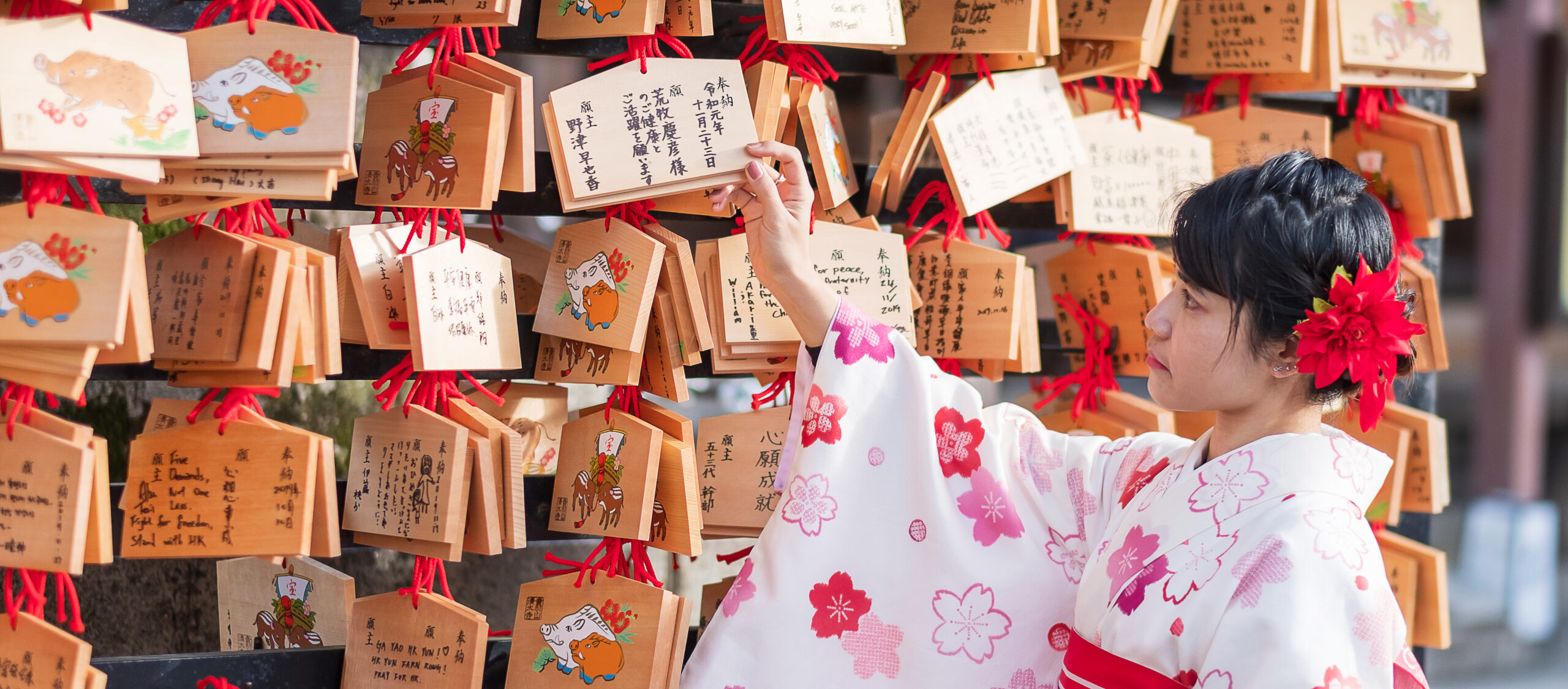In the heart of Japan’s rich and diverse culture lies a tradition that threads through the fabric of society, binding communities with a ribbon of gratitude and respect. This is the tradition of omiyage, a unique practice of gift-giving that transcends mere exchange of items to become a deeply ingrained social ritual. Omiyage, often translated as ‘souvenir’, carries a weight of expectation and emotion far beyond its literal meaning. Through this exploration of omiyage, we unwrap the layers of this tradition, from its historical roots to its contemporary adaptations, revealing how it shapes and reflects Japanese culture.
Unwrapping Omiyage: Japan’s Unique Tradition
Omiyage is not just a souvenir or a simple gift; it is a carefully chosen token of appreciation that holds great significance in Japanese culture. The practice involves purchasing local or specialty goods from a travel destination to bring back to colleagues, friends, and family. Unlike casual souvenirs, omiyage are selected with the recipient in mind, reflecting thoughtfulness and consideration. This tradition enriches travel experiences, turning them into opportunities to share and connect with others. Omiyage serves as a tangible representation of one’s journeys, stories, and the connections between the giver and the receiver. The act of selecting, giving, and receiving omiyage is a ritualistic affair, embedded with expectations and social norms that highlight respect and thoughtfulness.
The History Behind Omiyage Gifting
The roots of omiyage gifting stretch back centuries, intertwining with religious pilgrimages and festivals. Originating from the practice of bringing back sacred items or offerings from pilgrimages, omiyage has evolved over time. Initially, these were tokens of the pilgrim’s journey, meant to share the spiritual benefits with those who could not make the trip themselves. As travel became more accessible, the nature of omiyage shifted towards sharing the experience of the journey. This tradition has adapted to changes in society and travel, yet it retains its core essence of sharing and thoughtfulness. Historical shifts have transformed omiyage from religious offerings to more secular goods, mirroring broader changes in Japanese culture and society.
Omiyage vs. Western Gift-Giving: A Comparison
Comparing omiyage with Western gift-giving practices reveals distinct cultural nuances. In the West, gifts are often exchanged on personal occasions like birthdays and holidays, focusing on the individual’s preferences. In contrast, omiyage emphasizes the collective, often given to groups rather than individuals, and is intertwined with social obligations and the desire to share one’s travel experiences. The practice of giving omiyage is more about the gesture and the thought behind it than the gift’s monetary value. This contrasts with some Western practices where the gift’s value can sometimes hold significant importance. Omiyage, therefore, highlights a cultural emphasis on community and social harmony over individualism.
The Cultural Significance of Omiyage in Japan
Omiyage holds a revered place in Japanese culture, embodying the values of respect, consideration, and community. It acts as a medium through which individuals can express gratitude and maintain social ties. The act of giving omiyage is seen as a gesture of humility and thoughtfulness, reinforcing social bonds and expressing appreciation for one’s relationships. This tradition also reflects the Japanese aesthetic of attentiveness to detail, from the selection of the gift to its presentation. By participating in this practice, individuals play a role in a larger cultural narrative that values harmony, respect, and mutual care.
How Omiyage Strengthens Social Bonds
Omiyage plays a pivotal role in strengthening social bonds and fostering a sense of community. By bringing back gifts from travels, individuals share a part of their experience, bridging the gap between their personal journeys and their social world. This act of sharing is a form of communication, a way to convey thoughtfulness and to maintain connections. In the workplace, omiyage serves to smooth interpersonal relations, acting as a token of appreciation for colleagues’ support and cooperation. Through this practice, the fabric of social life is woven tighter, reinforcing the values of mutual respect and consideration that are central to Japanese society.
Selecting the Perfect Omiyage: An Art Form
The selection of omiyage is an art form, guided by considerations of quality, uniqueness, and appropriateness. Ideal omiyage are representative of their place of origin, offering a taste or experience unique to that location. The art lies in choosing something that balances novelty with the recipients’ tastes, a task that requires insight and attentiveness. Packaging, too, plays a crucial role, with beautifully wrapped gifts reflecting the care and thought put into the selection. This process is not merely about buying a gift; it is about curating an experience that can be shared, making the act of giving omiyage a deeply personal and thoughtful gesture.
The Etiquette of Giving and Receiving Omiyage
The etiquette surrounding omiyage is as important as the gift itself, governed by unwritten rules that dictate how gifts should be given and received. Givers should present omiyage with both hands, a gesture that shows respect and sincerity. Recipients, in turn, are expected to receive it in the same manner, expressing gratitude and sometimes hesitancy to accept, reflecting humility. It is also customary for recipients to reciprocate with a gift at a later time, perpetuating the cycle of giving and strengthening social ties. This etiquette underscores the mutual respect and appreciation that form the foundation of social interactions in Japan.
Omiyage Packaging: An Integral Part of the Gift
In the world of omiyage, packaging is not just a practicality but an integral part of the gift. The presentation of omiyage is imbued with as much significance as the gift itself, embodying the giver’s respect and thoughtfulness. Exquisite packaging, often elaborate and meticulously designed, enhances the gift’s value, turning it into a work of art. This attention to detail reflects the Japanese aesthetic principle of miyabi (elegance), where beauty and refinement are highly valued. The act of unwrapping omiyage becomes a ceremonial experience, enriching the act of giving and receiving.
The Impact of Tourism on Omiyage Practices
Tourism has significantly influenced omiyage practices, broadening the range of goods available and making the tradition more accessible to visitors. Tourist destinations often feature shops dedicated to omiyage, offering a plethora of local specialties and crafts. This has not only boosted local economies but also provided a platform for regions to showcase their unique products and traditions. However, the commercialization of omiyage has also raised concerns about the loss of authenticity, with some arguing that the true spirit of the tradition may be diluted by mass-produced goods. Despite these challenges, tourism has undeniably enriched the omiyage tradition, fostering cultural exchange and appreciation.
Omiyage in the Workplace: More Than Just a Gift
In the Japanese workplace, omiyage goes beyond being a mere gift; it is a vital tool for social cohesion and workplace harmony. Bringing back omiyage from trips is almost an unwritten rule, a gesture that acknowledges the support and cooperation of colleagues. This practice helps to smooth over workplace tensions, express appreciation, and reinforce a sense of community among coworkers. Omiyage serves as a subtle but powerful means of communication, conveying respect and gratitude, and playing a critical role in maintaining the social fabric of the workplace.
The Future of Omiyage: Tradition Meets Innovation
As Japan continues to evolve, so too does the tradition of omiyage, adapting to changing social dynamics and technological advancements. Innovations in packaging, product variety, and even the way omiyage is purchased and shared point to a tradition that is both resilient and flexible. From artisanal crafts to gourmet delicacies, omiyage continues to reflect the diversity and creativity of Japanese culture. As this tradition navigates the modern world, it remains a testament to the enduring values of thoughtfulness, community, and respect that define Japanese society.
From Local Delicacies to Crafted Goods: The Range of Omiyage
The range of omiyage is as diverse as Japan itself, encompassing everything from local foods and sweets to artisanal crafts and regional specialties. Each prefecture boasts its own unique offerings, providing a taste of the local culture and landscape. This diversity allows travelers to share a piece of their experience in a way that is tangible and meaningful. From the famed Hokkaido melons to the intricate ceramics of Kyushu, omiyage offers a way to celebrate and share the rich tapestry of Japanese culture and tradition.
The tradition of omiyage is a beautiful encapsulation of the Japanese spirit, weaving together threads of history, culture, and social connection. As we have unwrapped this unique practice, it’s clear that omiyage is far more than a simple exchange of gifts. It is a profound expression of gratitude, respect, and the desire to share. As Japan strides into the future, the tradition of omiyage stands as a vibrant reminder of the values that remain at the heart of Japanese society. In every elegantly wrapped package lies not just a gift, but a bridge between people, a token of shared experiences, and a celebration of the intricate beauty of Japanese culture.





